Coastal Commission approves application for aquatic disposal site in Newport Harbor
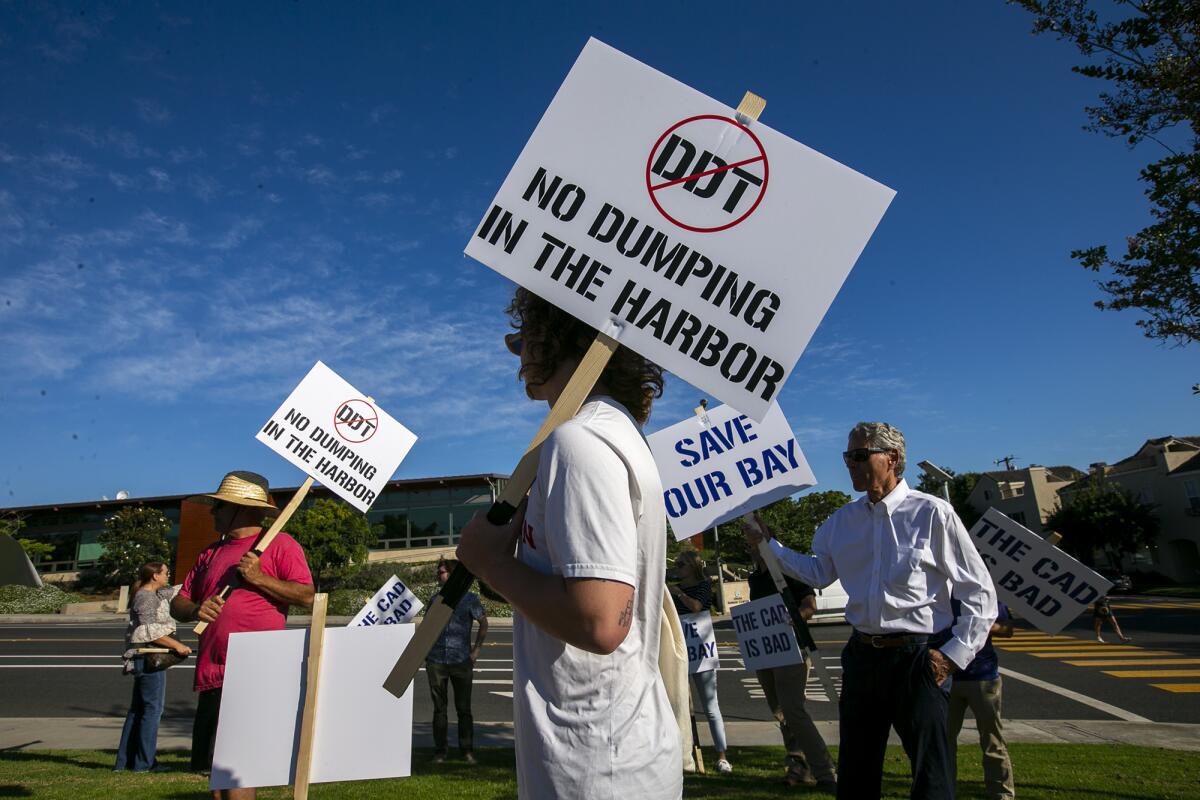
- Share via
After hearing from local environmental groups objecting to its construction, the Coastal Commission on Friday approved an application submitted by the city of Newport Beach for construction of a confined aquatic disposal site, known as a CAD, in Newport Harbor.
The purpose of the CAD is to contain sediment that is not safe for ocean release. The city had been considering locating it in lower Newport Harbor since 2019.
Commissioner Matt O’Malley was the lone dissenting vote on the project, which was considered on the final day of the Coastal Commission’s October meetings in San Diego. O’Malley said he viewed some of the alternative analyses as “fairly cursory.” The data showing where the fill would come from once the CAD was excavated was incomplete, he said.
“That has not been identified as far as I can tell other than [through] very broad statements about supposed quality in nature of the fill, although we don’t know where that is and it doesn’t appear to go through another independent environmental review,” said O’Malley.
He said that if the fill were to come from offsite it would need to be dredged, barged and trucked into the area — an option that was not favored for disposal in the first place. He also voiced concerned about the potential for resuspension of the contaminated material.
Newport Harbor, one of the largest recreational harbors in the country, needs regular dredging to remove sediment that would otherwise impede navigation by vessels. It was last partially dredged in 2012-13. Mercury-tainted sediment had previously been discovered in the harbor, near the turning basin and Lido Peninsula.
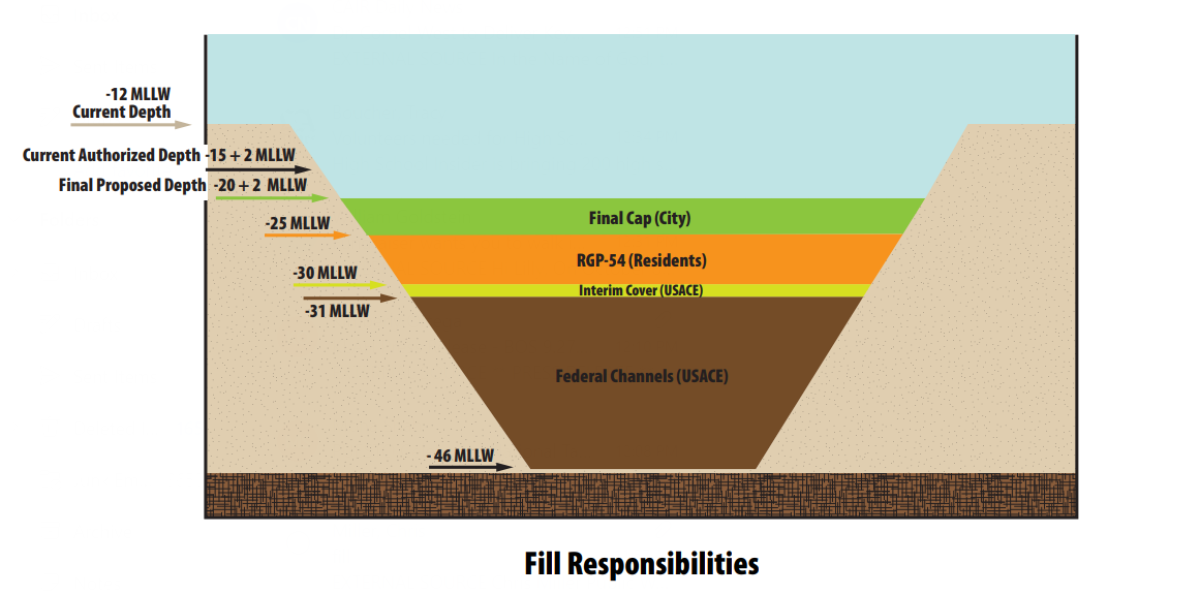
The hole is expected to be approximately 590 feet by 590 feet and will have the capability to contain roughly 112,500 cubic yards of dredged material from the federal channels feeding into Newport Harbor. As proposed, it will also have enough space for an additional 50,000 cubic yards of material from routine dredges outside of those channels.
The city submitted the application to the Coastal Commission for this disposal site in May 2021.
City staff confirmed to Coastal Commission staff there had been at least 65 opportunities — via public hearings, news releases and other means of outreach — for residents to raise any concerns they might have about the project.
Tech mogul and Newport Beach resident Palmer Luckey presented a number of alternative ideas — the most viable of which was to place the contaminated material at lower Castaways.
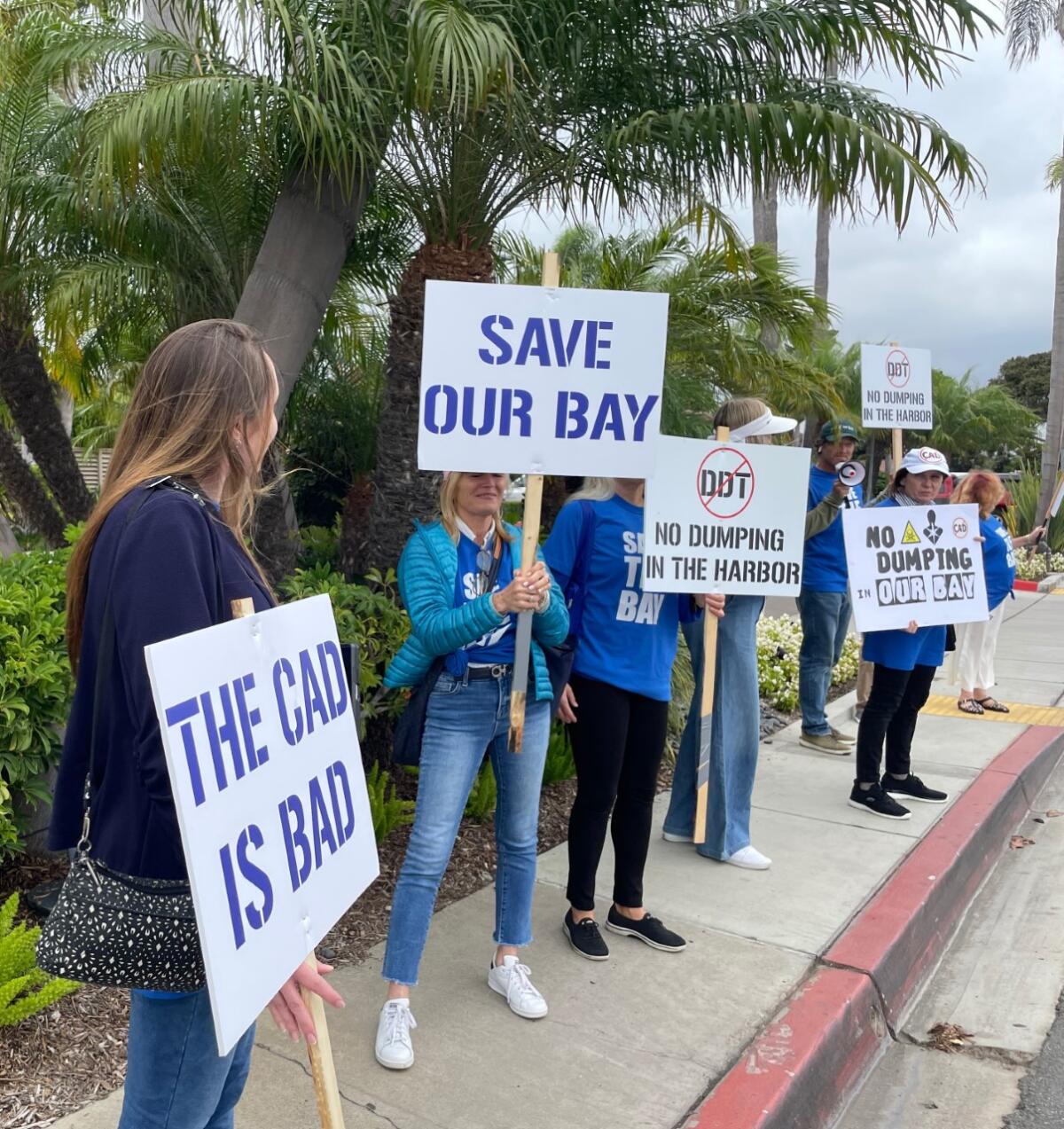
That proposal was not endorsed by city staff, who said placing that volume of sediment on lower Castaways would cover the “pocket” beach at a height that would be considered unacceptable to residents.
Coastal Commission staff concurred with Newport Beach’s assertion. The two staffs agreed Luckey’s proposal would not only negatively impact public access to the shoreline but could also harm sensitive habitat in the waterline.
Friends of Newport Harbor showed up early Friday morning before the commissioners met to object to the project. Wearing blue T-shirts that called for the Coastal Commission to “Save the Bay,” protesters carried signs that read, “The CAD is bad,” “Save Our Bay” and “No dumping in the Harbor.”
The group previously protested at Newport Beach City Council meetings, in September and as recently as Tuesday, in hopes of getting council members to pull the plans. No such action was taken.
Members of the organization, first spearheaded by Luckey, then pinned their hopes on the Coastal Commission rejecting the CAD for environmental and public safety concerns.
At Friday’s hearing, members of OC Coastkeeper also voiced their objections to the plan. Associate director of programs Ray Hiemstra said the organization had “significant concerns” about the project. Hiemstra described the sediment as “wrongfully characterized as harmless” by the city.
Hiemstra also said his group has concerns about the sufficiency of an interim 1-foot sand cap that will be placed on the CAD for two years.
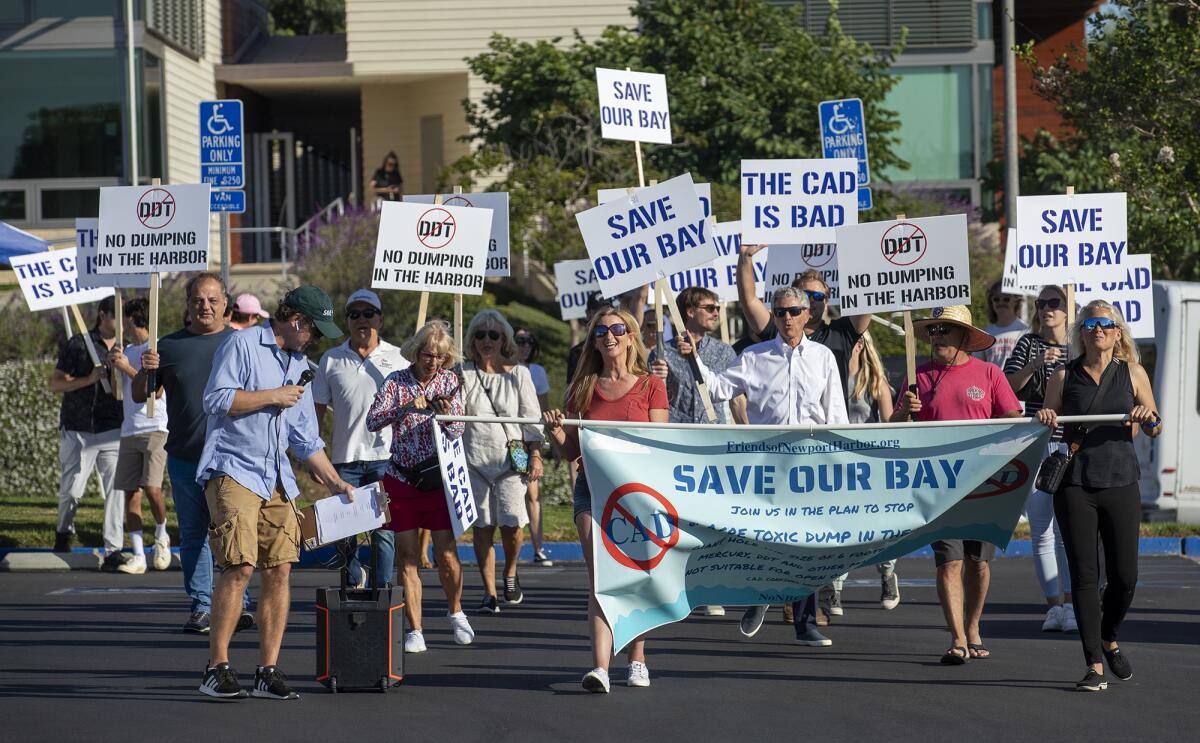
Arguments by Friends of the Newport Harbor mirrored those fears.
Commissioners raised questions of both its staff and the city of Newport Beach. They also called on Anchor QEA, the firm that prepared models to test water quality impacts from construction, to respond to those concerns.
O’Malley and Commissioner Dayna Bochco asked if there had been adequate testing, if all testing was conducted in alignment with federal requirements and what the results of those tests were.
Newport Beach public works manager Chris Miller told commissioners the sediment that would be contained in the CAD would not be toxic.
“The EPA has informed us it is not toxic or threatening and can remain in place,” Miller said. “It is not toxic or hazardous.”
Commissioner Linda Escalante said she understood speakers were worried about environmental impacts, but that they “lost” her when they used the communities adjacent to the Port of Los Angeles and Long Beach as examples of where these kinds of materials should be buried, instead of Newport Harbor.
Escalante described it as a “fundamental environmental injustice” and said she was supportive of recreational use but that boating was a form of access only the wealthy could afford. She said she could not support a solution that would place the sediment elsewhere on the coast.
O’Malley and Commissioner Steve Padilla agreed, though Padilla said the analysis and evidence was sufficient to support the recommendation by commission staff to approve the project.
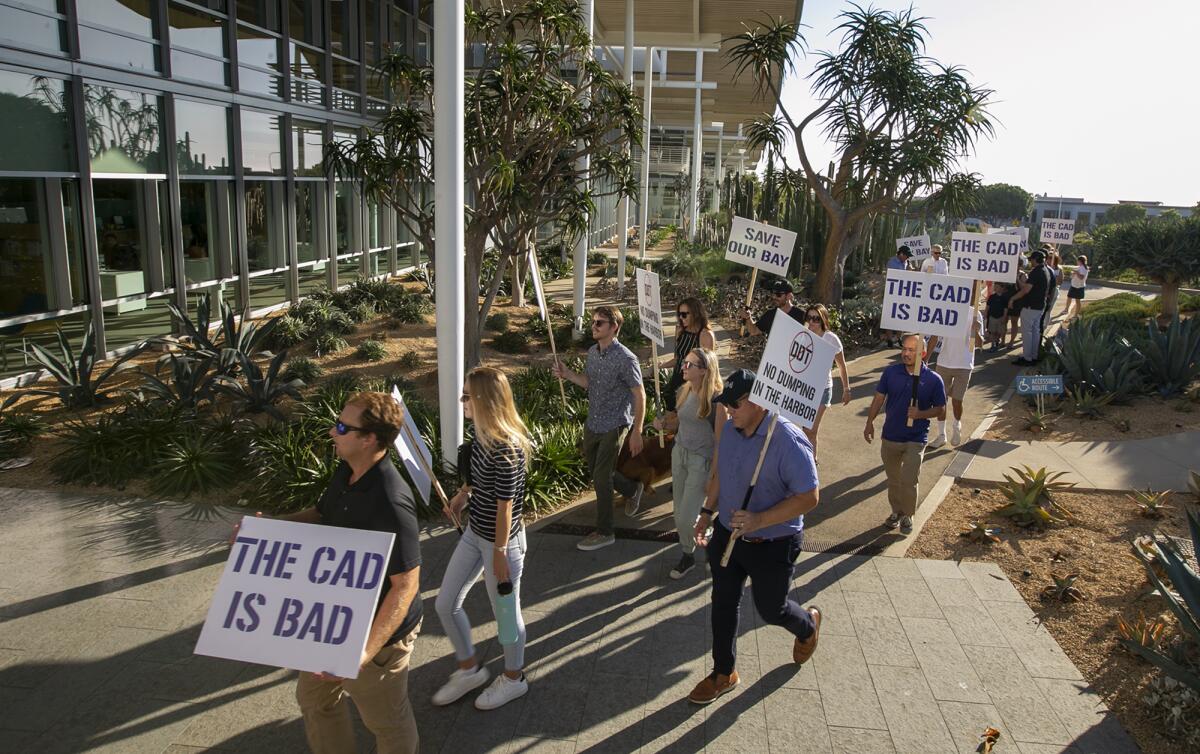
In a statement issued after the commission approved the project, Shana Conzelman, volunteer director of community outreach for Friends of Newport Harbor, said that all her group sought Friday was for the commissioners to “ask the city to go back and take the appropriate samples.
“Newport Harbor is ... used by people from all over from the region, from all over the state and all over the world. People fish in the harbor for sustenance. We examined all of the city’s materials and they simply didn’t follow the testing guidelines,” Conzelman said. “The city is planning to take sediment containing DDT, PCBs and extremely high levels of mercury and dump them back into the harbor. This is too risky a gamble to take.
“This is not a cleanup; this is a cover up. It’s akin to taking the worst of the worst material and sweeping it under the rug.”
All the latest on Orange County from Orange County.
Get our free TimesOC newsletter.
You may occasionally receive promotional content from the Daily Pilot.




